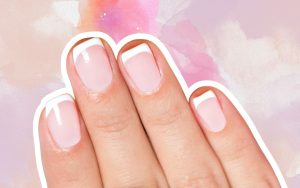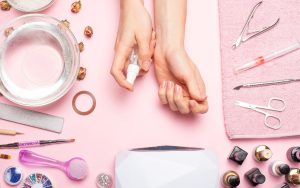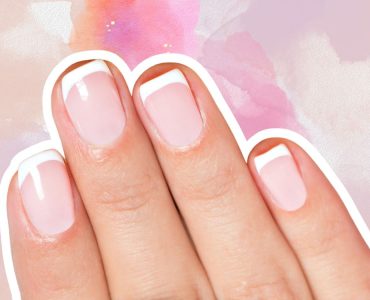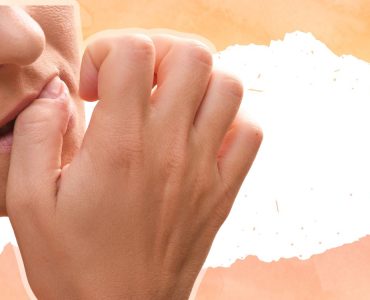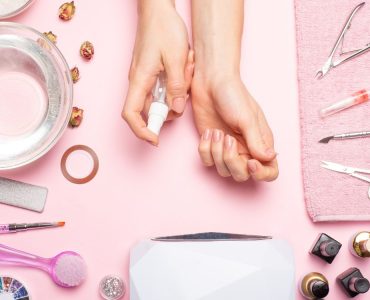Yellow nails can be quite alarming and may leave you wondering about their causes and potential solutions. Healthy nails not only enhance your appearance but also serve as indicators of your overall well-being. In this blog post, we will explore the various factors that can cause nails to turn yellow.
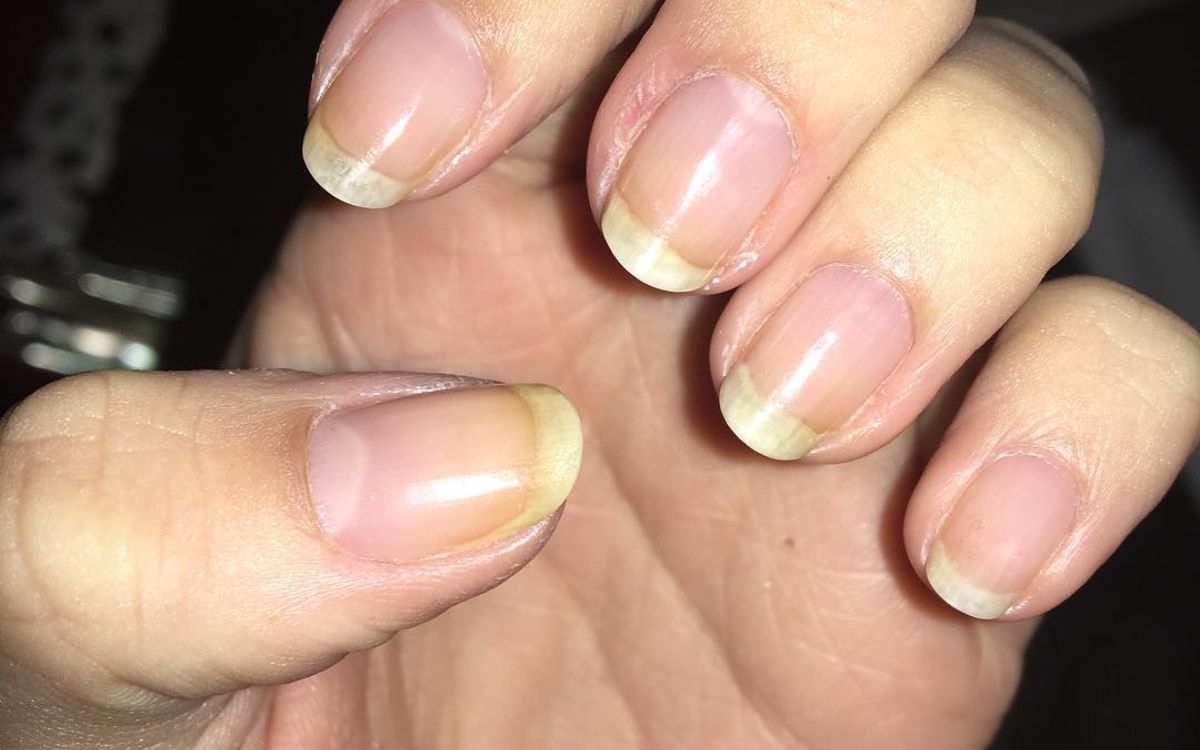
Understanding these causes can help you identify the underlying issues and take proactive steps towards achieving healthier nails. From fungal infections and nail polish stains to lifestyle choices and medical conditions, we’ll cover it all. So, let’s dive in and uncover the reasons behind those yellow nails!
Common Causes of Yellow Nails
Yellow nails can be attributed to various factors, ranging from external influences to underlying health conditions. Understanding these common causes is crucial in addressing the issue and taking appropriate measures to restore the natural color and health of your nails. Let’s explore the primary culprits behind yellow nails:
Fungal Infections
One of the leading causes of yellow nails is fungal infections. Fungi, such as dermatophytes and non-dermatophytes, can invade the nail bed, resulting in discoloration and changes in texture. These infections often start at the edge of the nail and gradually spread, leading to yellowing, thickening, and brittleness.
Individuals who frequently expose their nails to moist environments, such as swimmers or those who wear tight-fitting shoes, are more susceptible to fungal nail infections. If left untreated, the infection can worsen and cause discomfort. Seeking appropriate treatment is crucial to eliminate the fungus and restore the natural color of your nails.
Nail Polish Stains
Another common culprit behind yellow nails is the staining caused by nail polish. Many pigments found in nail polishes, particularly darker shades, can seep into the nail plate and leave behind stubborn yellow stains.
Continuous use of nail polish without proper protection or prolonged exposure to colored polishes can contribute to the discoloration. It’s essential to practice preventive measures, such as using a base coat before applying colored nail polish and giving your nails a break from polish occasionally.
Smoking
Smoking not only poses numerous health risks but can also affect the color of your nails. The chemicals present in tobacco smoke can gradually discolor the nails, turning them yellow or even brownish. The nicotine and tar in cigarettes are particularly responsible for the staining effect.
Read This Next:
Smoking restricts blood flow, reducing the supply of oxygen and nutrients to the nails, further contributing to their yellow appearance. Quitting smoking not only benefits your overall health but also improves the color and quality of your nails.
Medical Conditions and Disorders
Several underlying medical conditions and disorders can manifest in the form of yellow nails. These conditions often require proper diagnosis and treatment to address the underlying issue effectively. Here are a few examples:
Nail Psoriasis
Psoriasis, a chronic autoimmune disease, can affect the nails, leading to yellowing, pitting, and thickening. Nail psoriasis is characterized by an overactive immune response, causing rapid nail cell growth and subsequent discoloration. Treating nail psoriasis usually involves a combination of topical treatments, medications, and lifestyle modifications.
Yellow Nail Syndrome
Yellow nail syndrome is a rare condition characterized by slow-growing, yellow, thickened nails. It is often associated with respiratory conditions, lymphedema, and systemic diseases. The exact cause of yellow nail syndrome remains unknown, but it is believed to result from impaired lymphatic drainage. Treatment focuses on managing underlying conditions and improving lymphatic flow.
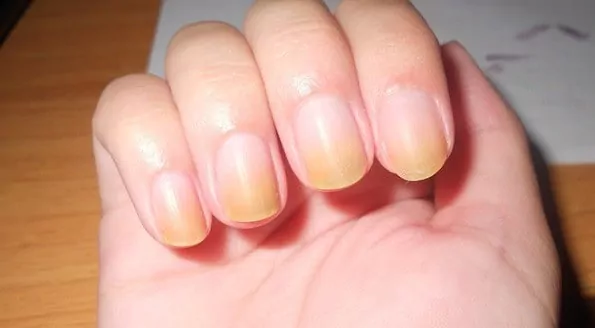
Thyroid Disorders
Thyroid disorders, such as hypothyroidism or hyperthyroidism, can impact nail health, leading to yellowing and other changes. These conditions affect the production and balance of hormones in the body, which can influence nail growth and appearance. Treating the thyroid disorder and restoring hormonal balance often helps improve nail health.
Identifying the underlying medical condition and seeking appropriate medical guidance is crucial for addressing yellow nails caused by these disorders. Proper diagnosis and treatment can lead to significant improvement in nail color and overall well-being.
Lifestyle and Prevention Tips
Maintaining healthy and vibrant nails goes beyond addressing the underlying causes of yellow nails. Incorporating certain lifestyle practices and preventive measures can help you promote overall nail health and prevent yellowing. Here are some valuable tips to consider:
Proper Nail Care
Proper nail care is essential for maintaining healthy nails. Regularly trimming your nails to an appropriate length, filing them gently to avoid rough edges, and shaping them properly can contribute to their overall health and prevent potential damage.
It’s also crucial to practice good hygiene by keeping your nails clean and dry. Avoid excessive moisture, as prolonged exposure to water can weaken the nails and make them more susceptible to yellowing and infections.
Read This Next:
Avoiding Excessive Use of Nail Products
While nail polish can enhance the appearance of your nails, excessive and continuous use can have detrimental effects. Give your nails periodic breaks from nail polish to allow them to breathe and recover. When using nail polish, opt for high-quality brands that are free from harmful chemicals and toxins.
Consider using a protective base coat before applying colored polish to prevent staining. Additionally, be cautious when using nail enhancements like gels or acrylics, as improper application and removal can weaken the nails and contribute to yellowing.
Maintaining a Balanced Diet
Proper nutrition plays a vital role in promoting healthy nails. Incorporating a balanced diet rich in essential vitamins, minerals, and proteins can help support nail growth and strength. Include foods that are good sources of biotin, vitamin E, iron, zinc, and omega-3 fatty acids. Some examples include eggs, leafy greens, nuts, fish, and legumes. Drinking an adequate amount of water is also crucial for nail hydration and overall health.
Hydration and Moisturization
Keeping your nails and cuticles adequately hydrated is essential for their health and appearance. Apply a nourishing cuticle oil or moisturizer regularly to prevent dryness, cracking, and peeling. When performing tasks that involve prolonged exposure to water or chemicals, such as washing dishes or cleaning, consider wearing protective gloves to minimize the impact on your nails.
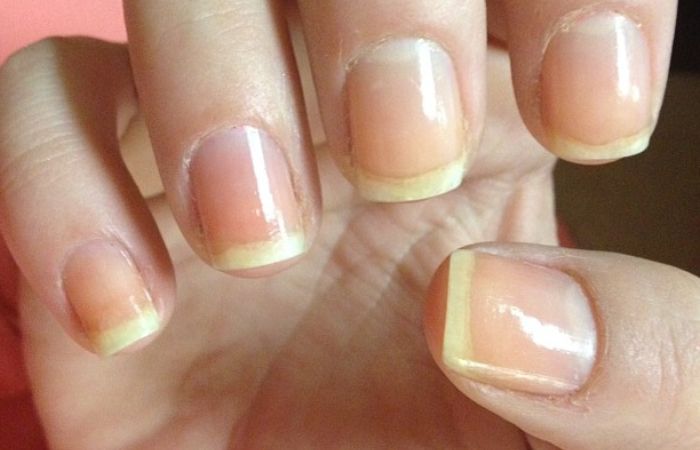
Can Certain Medications Cause Nails to Turn Yellow?
Medications can have various effects on the body, and in some cases, they can lead to changes in the appearance of the nails, including turning them yellow. While yellowing of the nails is not a common side effect of most medications, certain drugs have been associated with this discoloration. It is important to note that the yellowing of nails due to medications is usually a temporary condition that resolves once the medication is discontinued or the underlying cause is treated.
Antibiotics
Some antibiotics, particularly those belonging to the tetracycline class, have been known to cause yellowing of the nails as a side effect. Tetracycline antibiotics are commonly used to treat bacterial infections such as acne, respiratory tract infections, and urinary tract infections. The yellow discoloration typically appears as a result of the medication binding to the nail tissue and causing pigmentation changes.
Antifungal Medications
Certain antifungal medications, such as itraconazole and terbinafine, may also cause yellowing of the nails. These medications are often prescribed to treat fungal nail infections, also known as onychomycosis. In some cases, the antifungal agent can affect the color of the nails, leading to yellowish or brownish discoloration. However, it is important to continue the prescribed treatment for the full duration, as the primary goal is to eliminate the underlying fungal infection.
Chemotherapy Drugs
Some chemotherapy drugs used in cancer treatment can affect the nails and cause yellowing. The discoloration may occur due to the direct toxic effects of the medication on the nail matrix, the part of the nail responsible for nail growth. Chemotherapy-induced yellow nails are usually a transient side effect and tend to improve over time as the body recovers from the treatment.
Read This Next:
Other Medications
There have been rare reports of other medications causing yellowing of the nails, although the mechanism of this effect is not always clear. For example, certain cardiovascular drugs, such as quinidine and amiodarone, have been associated with nail discoloration, including yellowing. However, it’s important to remember that these cases are uncommon, and other factors or underlying conditions may contribute to the nail changes.
Can Nutritional Deficiencies Lead to Yellowing of The Nails?
The health and appearance of our nails can be influenced by various factors, including our diet and nutritional status. While there are several potential causes for yellowing of the nails, nutritional deficiencies can indeed contribute to this discoloration. Adequate nutrition is vital for maintaining the overall health of our nails, and deficiencies in certain essential nutrients can manifest as changes in their color and appearance.

Vitamin Deficiencies
Vitamins play a crucial role in nail health, and deficiencies in certain vitamins can result in nail discoloration. Specifically, deficiencies in vitamin B12 and vitamin E have been associated with yellowing of the nails. Vitamin B12 is essential for proper nail cell formation, and a deficiency can lead to brittle nails that may turn yellow. Similarly, vitamin E deficiency can affect the integrity of the nail plate, potentially causing yellowing and other nail abnormalities.
Iron Deficiency
Iron is another nutrient that plays a significant role in nail health. Iron deficiency, also known as anemia, can result in pale or yellowish nails. When the body lacks sufficient iron, it prioritizes the allocation of iron to essential organs, leading to reduced iron availability for nail growth. As a result, the nails may become brittle, thin, and turn yellowish in color.
Protein Deficiency
Proteins are the building blocks of our body, including our nails. Inadequate protein intake or protein malnutrition can negatively impact nail health, potentially leading to yellowing of the nails. Protein deficiency may cause the nails to become weak, brittle, and prone to discoloration. Ensuring an adequate intake of high-quality protein sources, such as lean meats, fish, legumes, and dairy products, is crucial for maintaining healthy nails.
Zinc Deficiency
Zinc is a mineral that plays a vital role in various physiological processes, including nail growth and development. Zinc deficiency can affect the structure and strength of the nails, leading to yellowing, as well as other nail abnormalities like ridges and white spots. It is important to note that zinc deficiency is relatively rare, but certain conditions that impair zinc absorption, such as gastrointestinal disorders, can increase the risk of developing this deficiency.
Conclusion
In conclusion, yellow nails can be a distressing condition, but understanding the causes and implementing appropriate solutions can help restore the natural beauty and health of your nails. Whether it’s addressing fungal infections, being mindful of the impact of nail polish, making lifestyle changes, or seeking professional help for underlying medical conditions, there are several avenues to explore.
Remember, maintaining proper nail care, adopting a balanced diet, and keeping hydrated are essential for overall nail health. By following the tips and insights shared in this blog post, you can take proactive steps towards healthier, stronger, and more vibrant nails. Embrace these changes, and watch as your yellow nails transform into a reflection of your well-being.



